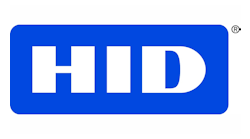This article originally appeared in the 2020 Access Control Trends & Technology bonus publication.
As communities and economies re-open, concerns around COVID-19 and other infectious diseases will be changing practically every way that people live, work, and conduct regular business for some time. There are many proactive measures and industry best practices that organizations should adopt to create and maintain a safe and secure workplace while ensuring business continuity.
A variety of widely adopted access control and other trusted identity technologies will play a key role in facilitating these measures and best practices for safe re-openings. These include location services solutions proven in workplace optimization applications and physical identity access and visitor management software, among others.
Physical Distancing and Contact Tracing
One of the biggest challenges is implementing contact tracing and physical distancing procedures as well as improving hygiene to ensure a safe workplace.
Real-time location services technology is playing a key role here, automating how organizations monitor people’s proximity to others and measure localized density in real-time. It is also dramatically simplifying contract tracing by enabling detailed and automated record-keeping of where an employee has been in a building, with whom they have interacted, and if they have been complying with disinfecting requirements.
Organizations will first need a physical-distancing plan. This includes thinking about how to re-work the office layout for the distance between workplace positions, and how to enforce these new arrangements in the office and as employees move about. How are the restrictions and guidelines related to employee’s access to the workplace going to change as a result of social distancing? Also, if an organization wants to maintain 50 percent office density, for instance, how is this tracked against the metric?
Today’s physical identity and access management systems can be integrated with a facility's physical access control system to make this happen. Inside the building, real-time location services technologies are being employed that use Bluetooth LE beacons to monitor people’s proximity to others or to measure localized density in real-time. This technology simplifies contract tracing by enabling detailed and automated record-keeping of where an employee has been in a building and with whom they interacted. The same technology can be used to ensure compliance around the usage of hand sanitation stations, for example.
Organizations need to audit contact tracing against the entrance and exit logs as part of compliance requirements. This can be handled anonymously, or by enabling the identification of the contacts that the person has been near. Organizations can also categorize their suppliers based on how they operate: i.e., some may be denied entrance if they continue to send employees to tradeshows, regardless of whether the staff in question had been to a tradeshow or not. It may be that organization will bar access to outside contractors or employees not because of their individual behavior, but because of the blanket policies of the organization they represent. Non-compliance has been associated with fines, but now it could play a role in inter-organization access. An organization being out of compliance with the right policies could limit where, what and how much other organizations will allow staff access.
Safely Re-entering Buildings
Once a physical distancing and contract tracing solution has been determined, the first step in safely returning to buildings is to ensure that they are physically in shape to re-open after weeks or months of being unoccupied. Building readiness must be addressed completely before considering welcoming anyone inside. Also, who is coming back in and when? There will likely be a phased return to work.
After these decisions are made, the next step is to consider what, if any, additional screenings may be required for staff and contractors. These screenings might be related to travel history, temperature checking, whether they have shown any infection symptoms and other information. Depending on their answers, visits or interactions at points like delivery bays may be refused. Or, an individual might be required to go through additional checks. Many organizations have made temperature checking mandatory, often multiple times a day. The use of trusted identity technology can play an important role in further automating this vetting process and providing the necessary links back to building systems.
Guests will also need to be considered. Today’s visitor management systems give organizations a single source of real-time and historical insights into who is, or was, recently in the workplace. Since first impressions are made at the front desk or lobby, the visitor experience needs to be a positive one. At the same time, though, any emergency event requires that there be strict control over who is entering the workplace. This policy also needs to be clearly communicated to visitors. Doing this minimizes risk to visitors as well as the workforce.
In addition to delivering a high-quality visitor experience, the ideal visitor management system must enable organizations to meet regulatory compliance mandates and facilitate check-in at a self-service kiosk to minimize wait times. It should be capable of customizing the visitor experience to support specific security needs, such as accelerating and simplifying check-in or requiring additional security pre-checks. It also must automate compliance as it relates to visitor access rules with historical visit reports.
Organizations can strengthen security at the registration kiosk using a flexible, enterprise-grade visitor management system to add visitor sign-in steps. This has proven successful in the past when used to control the spread of infectious disease during an outbreak. They provide two particularly important capabilities that can be used by organizations to protect their workplace from the uncontrolled spread of an infectious disease: 1) enhance visitor registration policy with additional mandatory questions to help identify any visitors who may need other screenings, and 2) extend the visitor registration kiosk with a mandatory pop-up asking further questions during visitor check-in. A typical workflow for implementing additional check-in questions is here.
Also important for controlling the spread of infection throughout a facility is the ability to understand who has visited the workplace – and when. This requires the ability to automatically maintain an auditable trail of activity, which can be done using an enterprise-grade visitor management system that makes it easy to retrieve historical visit reports. This provides a timeline of who was in the workplace, and when they were there. The latest solutions include a single dashboard that provides useful visitor insights, and historical reports with visitor details including location and contact information, all in compliance with General Data Protection Regulation (GDPR) and other privacy regulations.
Another valuable option is the use of contactless technologies to further enforce social distancing and mitigate risk factors for infection transmission including such common surfaces as faucets, doorknobs and coffee pot handles. There also has been a growing demand for technologies that deliver contactless user experiences to securely access the workplace. These include automatic doors, contactless cards and mobile-based access, as well as automated turnstiles. Another example is “touch-free” processes such as emergency onboarding of employees through secure issuance and administration of staff badges and access control credentials. Solutions are available that combine cloud-based ID card printing with cloud-based identity management to minimize the impact on overwhelmed credential issuance departments and drive a more secure work environment.
As communities and economies begin to re-open, taking steps to address all of these issues will make it easier for organizations to control access and implement the levels of physical distancing that will be required to meet the challenges of safely operating under the threat of COVID-19. The complexity and number of challenges will vary depending on location but, in the mid to long term and on a more global level, there are proactive measures and best practices that will help an organization’s staff, contractors and visitors safely return to the workplace.
About the Author: Mark Robinton is Vice President of IoT Services at HID Global, where his group handles Location Services, Condition Monitoring, and Trusted Tag Services. Learn more about HID Global at www.securityinfowatch.com/10213866.



